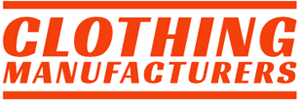Dyes are rising simultaneously, and the production costs of printing and dyeing factories are high
Switzerland Clariant, a professional chemicals manufacturer, recently announced that it will The price increases for most of its pigment and dye products range from 5% to 20%, and will take effect on May 1, 2018 or be implemented in accordance with the terms of the contract. This is also after the price of domestic anthraquinone dyes soared by 10,000/ton, and the multinational dye giants also made a sharp increase simultaneously!
According to data, at the beginning of this year, Clariant had implemented excessive price increases for some of its pigment products. Thanks to this, its sales in the first quarter increased by 7% year-on-year to 1.722 billion Swiss francs. From the perspective of business distribution, its sales growth rate in Asia is high, achieving an increase of 15%.
Dye prices are rising simultaneously, which will have a greater impact on the later dye market and even the entire printing and dyeing industry. At present, dye manufacturers and printing and dyeing factories are facing huge environmental pressure. Production capacity cannot be fully released, production costs continue to rise, and they are forced to raise prices again and again. In May or even the entire second half of the year, the role of environmental protection + the contradiction between supply and demand may help the printing and dyeing industry continue to operate at a high level.
How should downstream textile, gray cloth, printing and dyeing factories respond
In the context of rising oil prices, labor shortages, and dual-pronged environmental protection and safety supervision, textile, gray fabric, printing and dyeing and other manufacturers that are in the lower reaches of the polyester industry chain and have no say or bargaining power have been ” Struggling hard amid the sound of “rising”. Many factory leaders said that compared with last year, production and operating costs have increased by more than 10%, and profits are getting smaller and smaller.
The production and operation costs of raw materials and other products continue to rise, and in theory the end consumers will foot the bill. However, due to a series of problems such as fierce market competition, overcapacity, consumer disinclination, and inventory backlog, some downstream factories do not dare to transfer production costs rashly. Faced with such a dilemma, the direct response strategy of downstream factories is undoubtedly to increase revenue and reduce expenditure.
The purpose of open source is to increase revenue. The effective way is to increase prices, but price increases cannot simply pass on costs. Factories should continue to improve products in terms of added value, technological content, quality, etc. , thereby achieving the sequential deferral of high quality, high value-added, high value and high price products.
The purpose of throttling is to reduce expenses. The phenomenon of high energy consumption and low output has always existed in downstream factories. In fact, for these enterprises, there is a lot of room for improvement in terms of mechanization, production process management, and technical processes. Energy conservation and emission reduction, clean production, focusing on environmental protection, increasing investment in technological innovation, and building core competitiveness are the fundamentals for enterprises to resolve high cost pressures.
AAA57865ERT34GSD
Disclaimer:
Disclaimer: Some of the texts, pictures, audios, and videos of some articles published on this site are from the Internet and do not represent the views of this site. The copyrights belong to the original authors. If you find that the information reproduced on this website infringes upon your rights, please contact us and we will change or delete it as soon as possible.
AA





